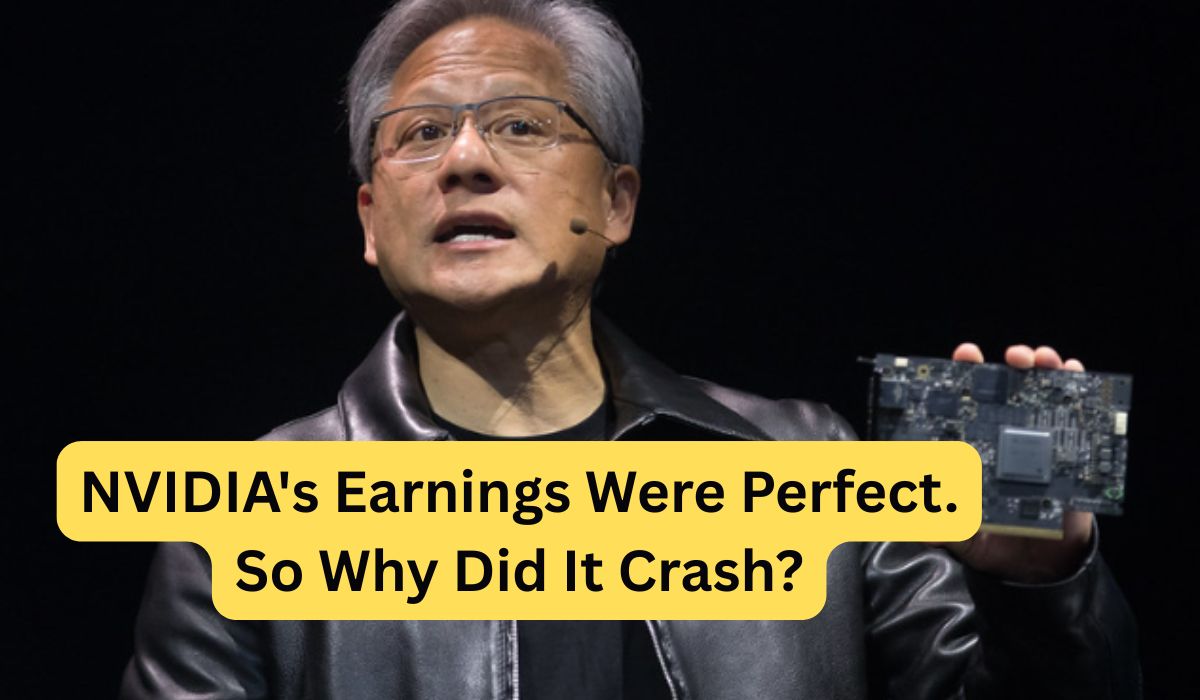NVIDIA delivered a blowout earnings report this week, yet shares immediately tumbled for two consecutive days afterward. What’s driving this counterintuitive reaction reveals something significant about the current market environment—and it’s not about the company’s fundamentals.
The pattern emerging here points to broader macro pressures overwhelming even exceptional corporate performance. When strong earnings can’t lift a stock, that tells us something important about investor psychology and market dynamics right now.
The Macro Weight on Markets
What’s particularly noteworthy about this week’s trading is how macro concerns are completely dominating stock reactions. Bloomberg equities reporter Carmen Reinicke, who has tracked this closely, noted during a recent CNBC appearance that “there are so many macro pressures on the market right now that that’s adding a lot of weight and dragging down the major indexes.”
The data suggests we’re seeing a pronounced risk-off mentality take hold. NVIDIA’s report, despite being objectively strong, simply wasn’t enough to counter these overarching fears. This represents a shift—when quality earnings reports fail to generate buying interest, it signals that investors are focused on something bigger than individual company performance.
An Unusual Split in Tech Leadership
Here’s what stands out in the current market behavior: we’re seeing an unexpected rotation within mega-cap tech. Apple has actually outperformed during this period, which breaks from its recent pattern. The stock typically moves opposite to the big AI names because it doesn’t have as significant exposure to the artificial intelligence buildout.
Meanwhile, Google continues showing strength following optimism around Gemini 3. This creates an interesting dynamic—some tech giants holding up while AI infrastructure leaders sell off. That divergence matters because it suggests selective concern rather than blanket tech weakness.
The Accounts Receivable Narrative
What becomes clear from recent trading is that investors started scrutinizing NVIDIA’s accounts receivable and inventory levels after the stock began falling. This is crucial timing. The sell-off happened first, then analysts and investors began digging into balance sheet details looking for justification.
“That felt like a desire to try and in retrospect, understand why we were seeing a sell off rather than seeing that and then seeing a stock sell off,” as Bloomberg’s coverage noted. When investors search for problems after a decline rather than before, it indicates the driving force is sentiment and macro conditions, not fundamental deterioration.
Fed Policy Driving Real-Time Reactions
The way I interpret these developments: Federal Reserve policy expectations are moving markets more than corporate earnings right now. Throughout the week, trading sessions showed positive momentum initially, then reversed sharply following comments from Fed officials—specifically remarks from New York Fed President John Williams about the December rate cut outlook.
This real-time sensitivity to Fed commentary demonstrates where investor attention has shifted. When Williams speaks and markets immediately react, but strong NVIDIA earnings generate selling, the hierarchy of market drivers becomes obvious. Macro policy concerns are simply overriding company-specific fundamentals.
The Debt Anxiety Indicator
Looking at this from a market risk perspective, credit default swaps on companies like Oracle have emerged as a telling indicator. These CDS spreads—essentially insurance against corporate default—have widened notably among major cloud infrastructure providers including Oracle, which saw particularly dramatic moves.
What this really indicates: investors aren’t literally expecting Oracle to default. No one seriously believes that’s imminent. Instead, CDS spreads are being used as a hedge against broader concerns about the AI infrastructure buildout and its financing. The stock had surged following strong performance, then “completely fallen off,” erasing those gains as debt questions intensified.
The Circular AI Bubble Debate
The debt question feeds directly into ongoing concerns about whether AI spending represents a sustainable investment cycle or something more precarious. The pattern here matters: these companies are loading up on debt to fund massive infrastructure builds, which raises leverage concerns.
Even when executives directly address these worries—Jensen Huang specifically discussed debt and capital allocation on NVIDIA’s earnings call—investors remain unconvinced. “They’re just seeing the house of cards. They’re worried about it,” according to Bloomberg’s market analysis.
This creates a circular dynamic: spending concerns lead to debt worries, which feed bubble fears, which drive selling, which makes valuations look more precarious, which reinforces the original concerns. Breaking this cycle requires either dramatic proof of AI monetization or a shift in macro sentiment.
What the Risk-Off Signal Means
The key insight here: when a company delivers exceptional results and the stock still falls, you’re no longer in a fundamentals-driven market. We’re in an environment where macro fears—rate policy, recession concerns, bubble anxiety—override corporate execution.
This doesn’t make NVIDIA’s business weak. The earnings were genuinely strong. But in risk-off periods, investors sell strength and buy defensive positions. The fact that Apple, typically less volatile, is outperforming the high-flying AI names exemplifies this rotation toward perceived safety.
The Bottom Line for Investors
The critical factor to understand: this market phase depends heavily on Federal Reserve signals and broader economic indicators. Strong corporate earnings alone won’t stabilize AI infrastructure stocks if macro concerns persist.
Three key variables will determine whether this sell-off extends or reverses: the December Fed decision and accompanying forward guidance, credit spreads among major tech borrowers continuing to widen or stabilizing, and tangible evidence that AI companies can demonstrate clear returns on their massive infrastructure investments.
The market is sending a clear message right now. Macro sentiment has taken control, and until that shifts—or until AI monetization becomes undeniably visible—even stellar earnings reports may struggle to generate sustainable rallies. This disconnect between corporate performance and stock price action defines the current environment, and recognizing that reality helps investors navigate what otherwise appears to be completely irrational market behavior.
